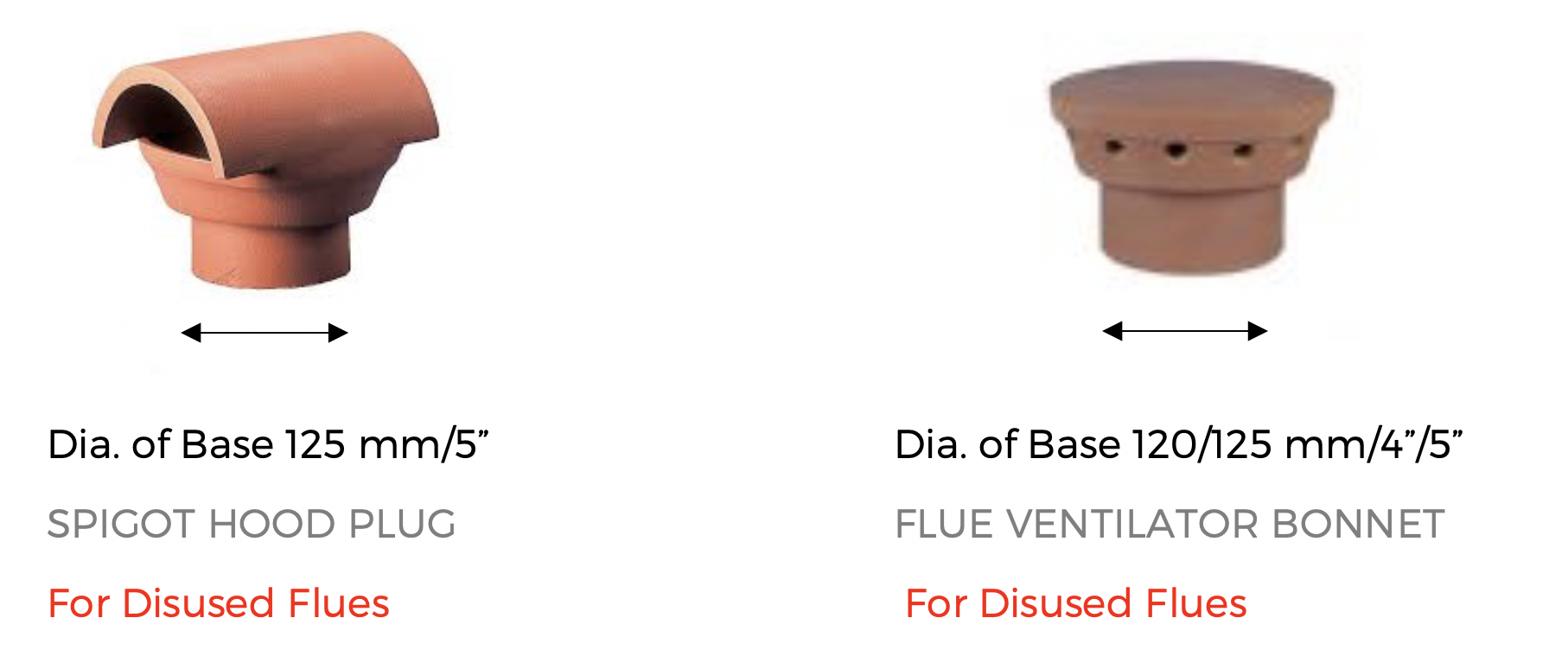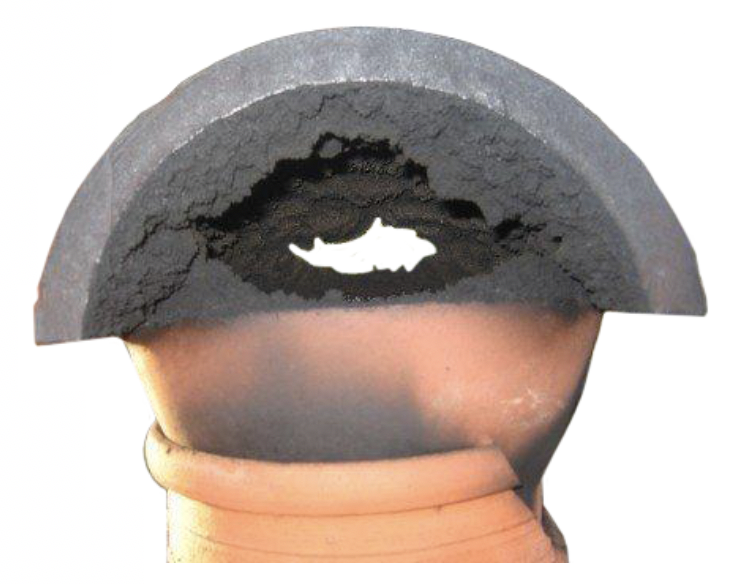
The above designs and patterns are made only for disused flues. However, we professional Chimney Sweeps are still encountering numerous situations where incorrect flue terminals/ chimney cowls and chimney pots have been fitted above working chimneys. There is general confusion amongst roofers, builders and the DIY trade about what is acceptable for gas fire appliances, solid fuel or oil appliances that use chimneys.
The size of the flue, determined by the cross-sectional diameter of the flue, outlet must be suitable for the heating appliance. Any flue liner that may be installed must not be restricted by flue terminations. By fitting the above two patterns this will reduce the flue outlet size. The typical patterns displayed above are for disused flues and will not allow the products of combustion to vent freely.
The NACS advises that Chimney Sweeps do not clean flues where there is an incorrect flue termination fitted. Consumers could mistakenly believe their chimney is safe to use because they have seen you sweeping the flue. This is despite the fact you could not pass your brush through the top of the flue to prove the chimney is completely clear.
The NACS advice is to identify all flue terminations before you start to clean a chimney. It is best practice to issue a NACS Warning Notice if you know that the flue top is wrong and dangerous for the heating appliance below in the fireplace. It is also best practice to walk away and not clean the chimney until the flue top has been corrected and is safe for the consumer’s heating appliance. Always use smoke pellets and your binoculars to assist you in identifying what is fitted to the top of the chimney stack.
Incorrect flue terminations can cause many problems, including fatalities by carbon monoxide poisonings where fumes cannot vent properly. Other common problems are smoky fireplaces, sometimes evidenced with soot staining and smoke damage on fireplace surrounds, even on walls and ceilings.

Chimneys need to vent so that the products of combustion can discharge safely.
Some years ago I conducted a survey of all the chimney cowls, flue terminals and chimney pots and was amazed to find that there were over two hundred different types that could be fitted to a chimney stack. That figure has increased significantly in recent years.
For further advice and specifications on the terracotta range of flue terminations please contact Red Bank Ltd now part of Forterra Building Products Ltd., and Hepworth Building Products of the Wavin Group. There are numerous companies who make and sell metallic chimney cowls, always check the manufacturer’s instructions and the appliance instructions to ensure they are compatible.
Finally, it is good practice to keep in your working van or office a box file library of the catalogues from manufacturers of flue terminations.